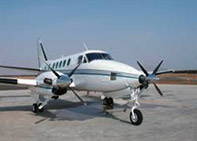Imagine a sudden flash of light accompanied by a loud noise while you are travelling on an aircraft. The thought of a mid-flight aircraft struck by lightning is intimidating but reportedly is a common occurrence.
All aeroplanes in the U.S. commercial fleet have been struck by lightning more than once each year. According to the author of Cockpit Confidential, Patrick Smith, an individual jetliner is struck by lightning every two years on an average.
In 1967, the last commercial plane crash occurred in the U.S., directly attributed to lightning. The catastrophe brought to light enhanced protection techniques and lightning certification tests that could authenticate designs’ safety.
Aeroplanes are engineered to withstand massive amperes of electricity. An aeroplane’s protection techniques include ensuring that the fuel tanks and fuel lines are fully encased so that it is impenetrable for a lightning spark to trigger off a fuel explosion. The aircraft skins made of aluminium are excellent conductors of electricity. They are engineered such that no gaps exist in the conductive path, which assures that the lightning current remains only on the exterior. Modern-day aircraft designs use advanced composite materials that contain an embedded layer of conductive fibres designed to carry lightning currents.
Aeroplanes must be verified by the manufacturers and compliant with regulations set by the Federal Aviation Administration (FAA) or similar institutions. This ensures that transients like indirect lightning effects, which can reach sensitive equipment inside the aircraft, computers, and instruments that control the aircraft, are not affected. The transients are averted by careful shielding, grounding, and use of surge suppression devices.
There are a separate set of regulations set up by the FAA for private aeroplanes that don’t transport passengers. Meanwhile, kid-built composite planes that are made of fibreglass or graphite-based components are still not subject to lightning protection regulations.








Leave a Reply
You must be logged in to post a comment.